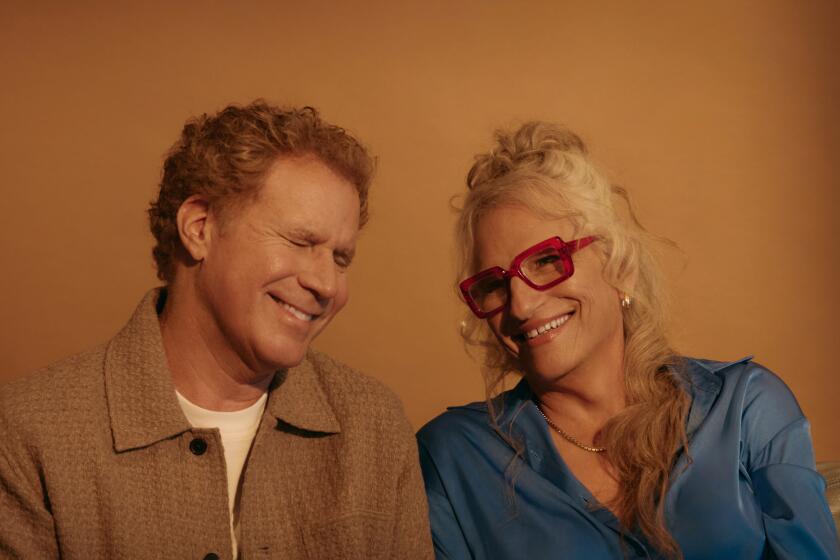‘Joker’s’ look — messy, raw and a little mad — had Joaquin Phoenix edgy, on screen and off
Growing up in Germany, Nicki Ledermann got hooked on makeup as a 14-year-old after seeing “The Exorcist.” “When it first came out, I was mesmerized,” she recalls. “I thought, ‘Oh my God, how did they do that?!’ I started doing all the makeup for my friends’ plays, and my musician friends when they did concerts.”
Now, all these years later, Ledermann has earned her first Oscar nomination for the equally shocking “Joker.” She hadn’t worked previously with the film’s director, Todd Phillips, but after moving to New York, Ledermann forged a formidable résumé. New York University film student projects led to indie movies and television shows, including “Sex and the City,” “Boardwalk Empire” and “The Knick.” After designing most of the makeup on “The Irishman,” Ledermann was introduced by producer Emma Tillinger Koskoff to Phillips and his design team.
Seven seasoned film journalists predict the winners in 10 Oscar categories. Vote for your picks!
Anchored by Joaquin Phoenix’s Arthur Fleck character, “Joker” earned 11 Oscar nominations en route to becoming the highest-grossing R-rated film in history. Speaking from her New York home, Ledermann (co-nominated with hair department head Kay Georgiou), explained how she helped create a creepy clown for the ages.
How did you arrive at the look for Joker’s makeup?
When I first met with Todd, he had a mock-up of the clown design that he and Joaquin had concocted — a print out of Joaquin photoshopped with clown makeup over his face. It was up to me to make sure the placements and colors and continuity were right. The important thing is that it had to feel organic to the character. The makeup had to be messy, it had to feel raw and handmade. The eyebrows are crooked, the smile is crooked, the blue diamonds are uneven — it’s a representation of the character’s madness and that’s what I love about it.
When he’s not wearing the clown makeup in this film, Joaquin often looks very pale. Is that his natural pallor?
There were moments where we gaunt him up to show how frail and fragile and hurt he is.
Technically, how do you “gaunt him up”?
You take the color out. In film, the redness can give someone a healthy glow and we wanted to take that out, the red. Remove all healthy glow.
Clown makeup often has a glossy sheen to it, but not Joker. Why was that?
There was nothing new or shiny in this movie, so it was important to keep the makeup matte. We didn’t want to cover up Joaquin. The [Joker] makeup needed to be part of Arthur Fleck, so you can see the wrinkles. We wanted to keep the skin texture alive so we wouldn’t be looking at a dead face. Also, I didn’t want the colors to be bright.
The red and blue makeup blends beautifully with the costume and production design. How did you choose those colors?
Everyone agreed the red should be on the warmer side, more brown-ish, like the color of blood when it’s been exposed to oxygen for a little while. The teal-blue [teardrops] — I call it “antique blue” — has a lot of green in it, which fit well with that wonderful broccoli green hair that Kay produced, which fit with the rust-colored suit, which fit with the set of the “Murray Franklin Show.” All those colors were carefully mixed so they’d work in sync with everything else. We had a very tight collaboration between all the departments.
You must have hundreds of hours during the “Joker” shoot doing makeup for the famously intense Joaquin Phoenix. What’s he like to work with?
Joaquin’s a very sensitive and shy person who doesn’t like to be touched and can’t sit still for a long time, so sometimes I had a hard time wrangling him. Because of the subject matter, he had to go into that Method acting deal that made things not easy in many ways for him, or for me.
But at the end of the day, there was not one person on the “Joker” set who didn’t adore the hell out of Joaquin because of his dedication, his hard work, his weird sense of humor. He’s definitely the most interesting actor I’ve ever worked with.
More to Read
Only good movies
Get the Indie Focus newsletter, Mark Olsen's weekly guide to the world of cinema.
You may occasionally receive promotional content from the Los Angeles Times.











